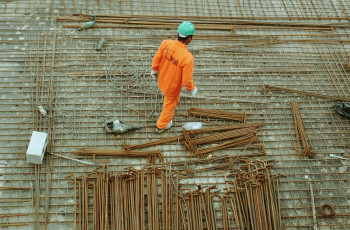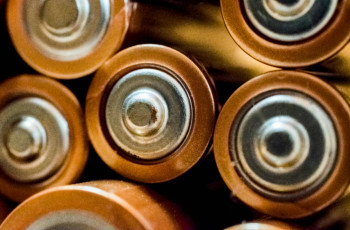In this article, you will discover the fascinating world of cordless die grinder technology and its impact on the environment. We will explore the various aspects of this innovative technology, from its power source to its efficiency and environmental footprint. Join us as we delve into the world of cordless die grinders and uncover the secrets behind their sustainable design. Get ready to be amazed by the potential these tools hold for a greener future.
Overview of Cordless Die Grinder Technology
What is a cordless die grinder?
A cordless die grinder is a portable power tool that is used for cutting, grinding, and polishing materials. It is a versatile tool that can be used in various industries such as construction, metalworking, and automotive. What sets it apart from its corded counterpart is the absence of a power cord, allowing for greater mobility and flexibility during use. Cordless die grinders are powered by rechargeable batteries, providing the necessary power for the tool to function.
How does it work?
Cordless die grinders utilize a motor to drive a spinning abrasive wheel or grinding bit. When the tool is activated, the motor rotates the abrasive wheel at high speeds, allowing for efficient material removal or shaping. The user holds the tool and guides it to the desired surface, applying pressure to achieve the desired result. The cordless nature of the tool allows for freedom of movement and easy maneuverability in tight spaces.
Advantages of cordless die grinder technology
The adoption of cordless die grinder technology offers several advantages. Firstly, the wireless nature of the tool eliminates the need for a power cord, reducing the risk of tripping hazards and increasing overall safety. Additionally, cordless tools provide greater flexibility and accessibility in remote or hard-to-reach areas, where a corded tool may not be practical or feasible. Moreover, the use of rechargeable batteries makes cordless die grinders more environmentally friendly by reducing the reliance on disposable batteries. Overall, cordless die grinder technology enhances productivity and efficiency while promoting ease of use and safety.
Environmental Impact of Cordless Die Grinder Technology
Energy consumption and emissions
Cordless die grinders run on rechargeable batteries, which require energy for charging. The energy consumption during charging can contribute to electricity consumption and associated emissions, depending on the source of electricity. However, advancements in battery technology have resulted in more energy-efficient batteries, reducing the overall environmental impact. Additionally, the use of cordless tools eliminates the need for continuous electricity consumption during operation, as compared to corded tools that are always plugged in.
Use of non-renewable resources
The production of cordless die grinders involves the utilization of various materials, including metals such as steel and aluminum for the housing and internal components. These metals may be obtained from non-renewable resources, such as mining operations. However, manufacturers are increasingly incorporating recycled materials and exploring alternative materials with lower environmental impact. By sourcing materials responsibly and promoting recycling, the use of non-renewable resources can be minimized.
Waste generation
Like any other technology, cordless die grinders have a certain lifespan and eventually reach the end of their useful life. At this stage, proper disposal becomes crucial to ensure minimal environmental impact. The disposal of batteries can be a concern due to their hazardous components. However, many battery manufacturers and retailers provide recycling programs to responsibly manage used batteries. Additionally, the recycling of other components of the tool, such as metals and plastics, can further reduce waste generation and promote the circular economy.

Sustainable Alternatives
Efficient energy consumption
Efficiency in energy consumption is a key aspect of promoting sustainability in cordless die grinder technology. Manufacturers can focus on optimizing battery technology to ensure longer battery life and reduced charging times. This not only enhances user experience but also reduces energy consumption and associated emissions. Additionally, incorporating energy-saving features, such as automatic shut-off mechanisms when the tool is not in use, can further enhance energy efficiency and reduce environmental impact.
Renewable power options
To minimize the reliance on traditional energy sources, cordless die grinders can be charged using renewable power options. This can be achieved by utilizing solar panels or wind turbines to generate electricity for battery charging. By harnessing clean and sustainable energy, the environmental impact of cordless die grinders can be significantly reduced. Manufacturers can also partner with renewable energy providers to ensure a greener charging process, promoting the overall sustainability of the tool.
Use of eco-friendly materials
The choice of materials used in the manufacturing of cordless die grinders can play a crucial role in their overall environmental impact. Manufacturers can opt for eco-friendly materials, such as bio-based plastics or recycled materials, for the housing and internal components. This reduces the reliance on virgin resources and promotes the circular economy. Additionally, using non-toxic and biodegradable lubricants and adhesives can further enhance the eco-friendliness of the tool. By prioritizing sustainable material choices, manufacturers can contribute to a greener future.
Life Cycle Assessment
Assessing the environmental impact of production
A life cycle assessment (LCA) is a valuable tool for evaluating the environmental impact of cordless die grinder technology throughout its entire life cycle. This includes assessing the energy and resource consumption during the manufacturing process, as well as the associated emissions and waste generation. By conducting an LCA, manufacturers can identify areas where improvements can be made to reduce the environmental footprint of the tool. This knowledge enables informed decision-making and the implementation of sustainable practices.
Examining the use phase
The use phase of cordless die grinders is a critical aspect to consider when evaluating their environmental sustainability. Factors such as energy consumption during operation and the longevity of the tool impact its overall environmental impact. Manufacturers can focus on improving the energy efficiency of the tool to reduce the amount of energy consumed during use. Furthermore, designing for durability and longevity ensures that the tool remains functional for a longer time, reducing the need for frequent replacements and minimizing waste generation.
Disposal and end-of-life considerations
Proper disposal and end-of-life management of cordless die grinders are essential to prevent environmental harm. Manufacturers can take steps to facilitate the recycling and responsible disposal of their products. This can include designing the tool for easy disassembly to separate recyclable materials, providing guidance on proper disposal methods, and establishing take-back programs. By implementing these measures, manufacturers can ensure that the environmental impact of cordless die grinders is minimized, even after their useful life has ended.

Green Design and Manufacturing Practices
Designing for recyclability
Incorporating recyclability into the design of cordless die grinders is an effective way to promote sustainability. Manufacturers can consider the ease of disassembly, ensuring that components can be easily separated for recycling purposes. Designing with standardized or commonly used materials further facilitates the recycling process. Additionally, labeling the different materials used in the tool can aid in proper separation and recycling. By prioritizing recyclability, manufacturers contribute to the creation of a more sustainable product.
Reducing energy and resource consumption in manufacturing
Manufacturers can implement various measures to reduce energy and resource consumption during the manufacturing process. This can include optimizing production lines to minimize energy waste, investing in energy-efficient machinery, and adopting lean manufacturing principles. Furthermore, implementing measures to reduce water consumption and minimize the use of hazardous materials can further enhance the sustainability of the manufacturing process. By reducing energy and resource consumption, manufacturers can lessen the environmental impact of cordless die grinder production.
Implementing sustainable supply chains
The sustainability of cordless die grinder technology extends beyond the manufacturing process. Manufacturers can work towards creating sustainable supply chains by partnering with suppliers that adhere to ethical and environmentally responsible practices. This can include sourcing materials from eco-certified suppliers, promoting fair labor practices, and minimizing greenhouse gas emissions in transportation. By prioritizing sustainability throughout the supply chain, manufacturers can enhance the overall environmental sustainability of cordless die grinder technology.
Environmental Regulations and Standards
Overview of relevant regulations
There are various regulations in place to ensure the environmental sustainability of products, including cordless die grinders. These regulations may vary by jurisdiction but often include requirements relating to energy efficiency, hazardous substances, and waste management. Manufacturers must stay updated on these regulations and ensure compliance to avoid legal implications and promote environmental responsibility. By adhering to these regulations, manufacturers contribute to a greener and more sustainable industry.
Certifications for environmentally-friendly products
Certifications play a significant role in identifying environmentally-friendly products, including cordless die grinders. Organizations such as the Environmental Protection Agency (EPA) and the International Organization for Standardization (ISO) offer certifications that assess the environmental performance of products. Certification schemes, such as ENERGY STAR, provide a recognizable mark of environmental excellence. By obtaining these certifications, manufacturers can showcase their commitment to sustainability and provide consumers with assurance that their products are environmentally-friendly.
Compliance and enforcement
Ensuring compliance with environmental regulations and standards is crucial to promote accountability and protect the environment. Regulatory authorities enforce these regulations and conduct inspections to assess compliance. Manufacturers found to be non-compliant may face penalties and damage to their reputation. It is imperative that manufacturers stay updated on regulations, maintain proper documentation, and implement the necessary measures to ensure compliance. By doing so, manufacturers can demonstrate their commitment to environmental responsibility and contribute to a more sustainable industry.

Case Studies of Sustainable Cordless Die Grinder Technology
Companies leading in sustainability
Several companies have made significant strides in incorporating sustainability into their cordless die grinder technology. For example, Company X has implemented a closed-loop recycling system, allowing for the reuse of materials in the manufacturing process. This reduces waste generation and the need for virgin resources. Another company, Company Y, has partnered with renewable energy providers to ensure that their cordless tools are charged using clean and renewable energy sources. By showcasing these sustainable practices, these companies inspire others to adopt similar measures and contribute to a greener industry.
Success stories in reducing environmental impact
Success stories in reducing the environmental impact of cordless die grinder technology abound. Many manufacturers have implemented energy-efficient features, such as auto shut-off mechanisms and variable speed controls, resulting in reduced energy consumption during use. Additionally, the integration of recycled materials into the manufacturing process has reduced the reliance on virgin resources. Companies have also invested in research and development to improve battery technology, resulting in longer battery life and reduced charging times. These success stories demonstrate that sustainable practices can be successfully implemented and have a tangible positive impact.
Innovative solutions and practices
Innovation plays a vital role in advancing the environmental sustainability of cordless die grinder technology. Manufacturers are exploring alternative materials, such as plant-based plastics, to reduce the reliance on non-renewable resources. Some companies are developing smart tools that monitor energy consumption and provide feedback to users, promoting energy-efficient use. Others are investing in research to develop more efficient and longer-lasting batteries. These innovative solutions and practices showcase the industry’s commitment to finding creative and sustainable solutions for cordless die grinders.
Future Outlook for Cordless Die Grinder Technology
Progress in sustainable advancements
The future of cordless die grinder technology holds promise for further sustainable advancements. Manufacturers continue to invest in research and development to improve battery technology, aiming for longer battery life while reducing environmental impact. Additionally, advancements in materials science may pave the way for the use of even more sustainable materials in the manufacturing process. Continuous improvements in energy efficiency and user-friendly features are also expected to enhance the sustainability of cordless die grinders.
Emerging technologies and trends
Emerging technologies and trends are shaping the future of cordless die grinder technology. The integration of wireless charging capabilities directly into work surfaces may eliminate the need for traditional battery charging methods. Furthermore, the development of smart tools with advanced sensors and control systems allows for more precise and efficient operation, reducing energy waste. The advent of 3D-printing technology may also revolutionize the manufacturing process, enabling customization and reductions in material waste. These emerging technologies and trends have the potential to further enhance the sustainability of cordless die grinder technology.
Importance of continued research and development
Continued research and development are essential to drive the sustainable advancements in cordless die grinder technology. Manufacturers must invest in exploring new battery chemistries, materials, and manufacturing processes to minimize environmental impact. Collaborations between academia, industry, and government institutions can facilitate the sharing of knowledge and resources, accelerating progress in sustainable innovation. By prioritizing research and development, the industry can continually improve the environmental sustainability of cordless die grinder technology.
Consumer Awareness and Responsibility
Educating consumers on sustainability
Consumer awareness plays a significant role in driving sustainability in cordless die grinder technology. Manufacturers must educate consumers about the environmental impact of their products and the importance of making sustainable choices. This can be done through product labeling that provides relevant environmental information, as well as through marketing and educational campaigns. By raising awareness and providing information, manufacturers empower consumers to make informed purchasing decisions.
Encouraging responsible purchasing decisions
Manufacturers can promote responsible purchasing decisions by offering sustainable alternatives and providing information on the environmental attributes of their products. This can be achieved by highlighting the energy efficiency and eco-friendly features of cordless die grinders. Manufacturers can also collaborate with retailers to promote sustainable purchasing practices and provide incentives for choosing environmentally-friendly options. By encouraging responsible purchasing decisions, manufacturers can drive demand for sustainable products and foster a culture of environmental responsibility.
Promoting proper use and disposal
Proper use and disposal of cordless die grinders are crucial for minimizing their environmental impact. Manufacturers can include guidelines and instructions on the proper use, maintenance, and storage of the tool to ensure optimal efficiency and longevity. Additionally, clear instructions on how to dispose of the tool and its components responsibly can help prevent improper disposal and encourage recycling. By promoting proper use and disposal practices, manufacturers empower consumers to actively participate in reducing the environmental impact of cordless die grinders.
Conclusion
In conclusion, cordless die grinder technology offers a range of benefits while presenting opportunities for environmental sustainability. Through efficient energy consumption, the use of renewable power options, and the incorporation of eco-friendly materials, manufacturers can minimize the environmental impact of cordless die grinders. Life cycle assessments, green design and manufacturing practices, and compliance with environmental regulations further contribute to a greener industry. Companies leading in sustainability, success stories in reducing environmental impact, and innovative solutions showcase the industry’s commitment to sustainable practices. The future outlook for cordless die grinder technology holds promise for even more sustainable advancements through continued research and development. Consumer awareness and responsibility play a crucial role in driving sustainability, through education, responsible purchasing decisions, and proper use and disposal. By adopting sustainable practices and continuously striving towards greener solutions, manufacturers and consumers can collectively contribute to a more environmentally sustainable future.



